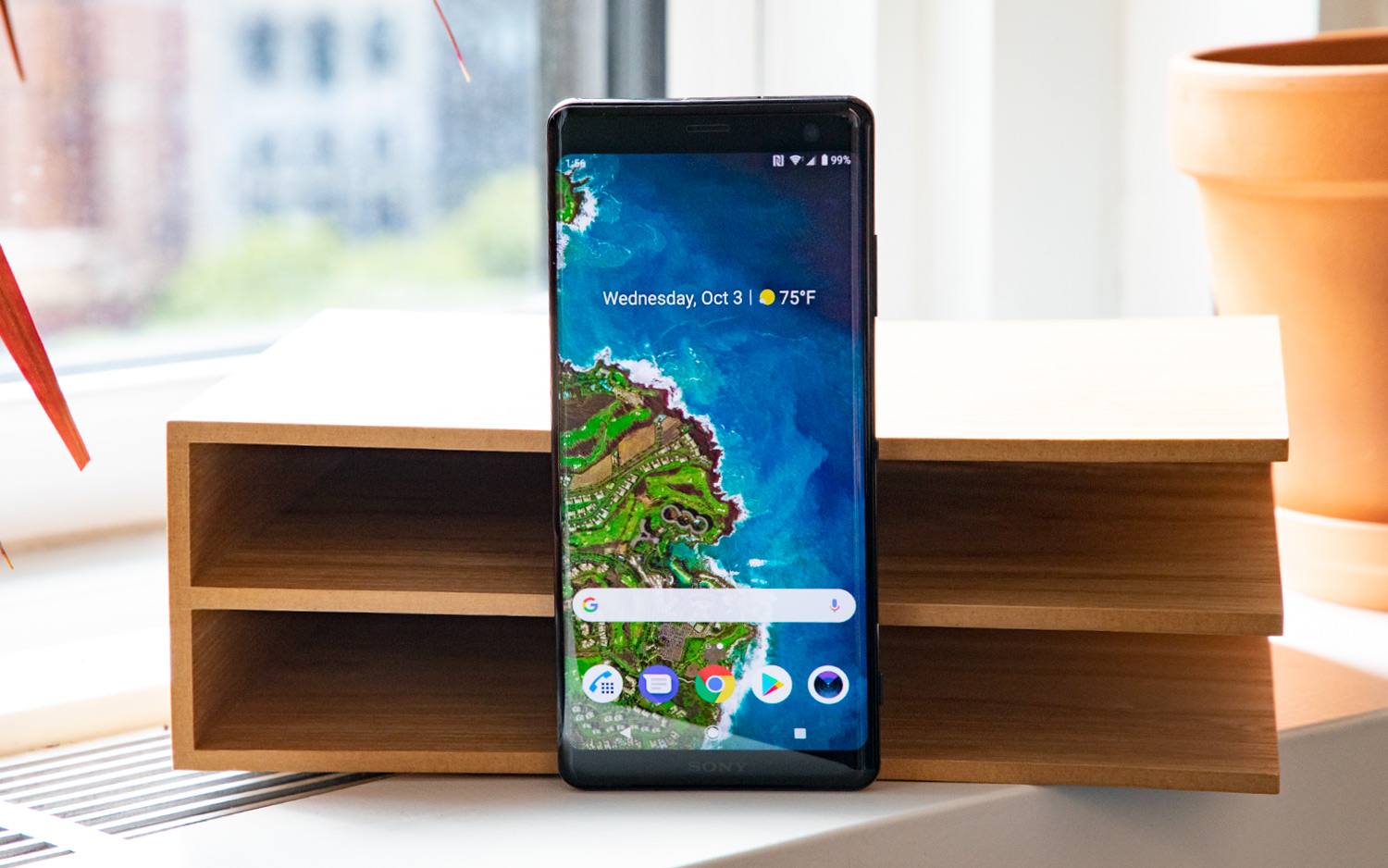Tom's Guide Verdict
Sony turned around and trotted out a successor to its Xperia XZ2 just a few months after that phone came out. Unfortunately, the Xperia XZ3 is a worse deal for buyers.
Pros
- +
Beautiful OLED display
- +
Android Pie at launch
- +
Wireless charging enabled
Cons
- -
Expensive
- -
Slow to charge
- -
Gimmicky features
- -
Middling cameras and average performance for the price
Why you can trust Tom's Guide
No your eyes do not deceive you. This is a review for Sony's new new flagship smartphone, the Xperia XZ3. It arrives no more than five months since the Xperia XZ2 hit the shelves, and three months after the XZ2 Premium.
Given the short turnaround between devices, it comes as little surprise that the XZ3 is a very familiar smartphone, right down to what's underneath its metal-and-glass enclosure. With a new OLED display and slightly increased battery capacity, though,the XZ3 seems like the device the XZ2 should have been in some ways.
However, those improvements demand a higher price. The $899 Xperia XZ3 is $100 more expensive than its predecessor, while still asking owners to make compromises that rival phones don't. Sony could have righted those wrongs; instead, it delivered yet another flagship that fails to meet the standard set by the best Android handsets on the market today.
Price and Availability
The $899 Xperia XZ3 is available for preorder now through Amazon and begins shipping Oct. 17. The phone comes in three colors — Black, White Silver and Forest Green — in just a single configuration with 4GB of RAM and 64GB of storage. It's compatible exclusively with GSM carriers, including T-Mobile, AT&T, Metro by T-Mobile and Cricket Wireless. Verizon and Sprint customers won't be able to use it on their carriers' networks.
Amazon is offering the XZ3 with a free pair of Sony's Xperia Ear Duo Bluetooth earbuds, which normally cost $279. The Ear Duo is rather unconventional among wireless headsets, as it's designed to invite ambient noise into the listening experience, rather than cutting it out. It also relays news, notifications, weather and calendar appointments to you via voice, Google Assistant-style.
Sony Xperia XZ3 Specs
| Price | $899 |
| OS | Android 9 Pie |
| Screen Size (Resolution) | 6 inches (2880 x 1440) OLED |
| CPU | Qualcomm Snapdragon 845 |
| RAM | 4GB |
| Storage | 64GB |
| microSD Slot? | Yes, up to 512GB |
| Rear Camera | Single 19 MP (f/2.0) |
| Front Camera | 13 MP (f/1.9) |
| Battery Size | 3,330 mAh |
| Battery Life (Hrs:Mins) | 7:41 |
| Water Resistance | Yes, IP68 |
| Size | 6.2 x 2.9 x 0.4 inches |
| Weight | 6.8 ounces |
Design: Haven't we been here before?
Sony made a long-awaited change to its smartphones' design with the Xperia XZ2 earlier this year. It was certainly a move in the right direction: The XZ2 introduced more rounded edges and an 18:9 aspect ratio coupled with thinner bezels compared with generations of blocky Sony flagships.
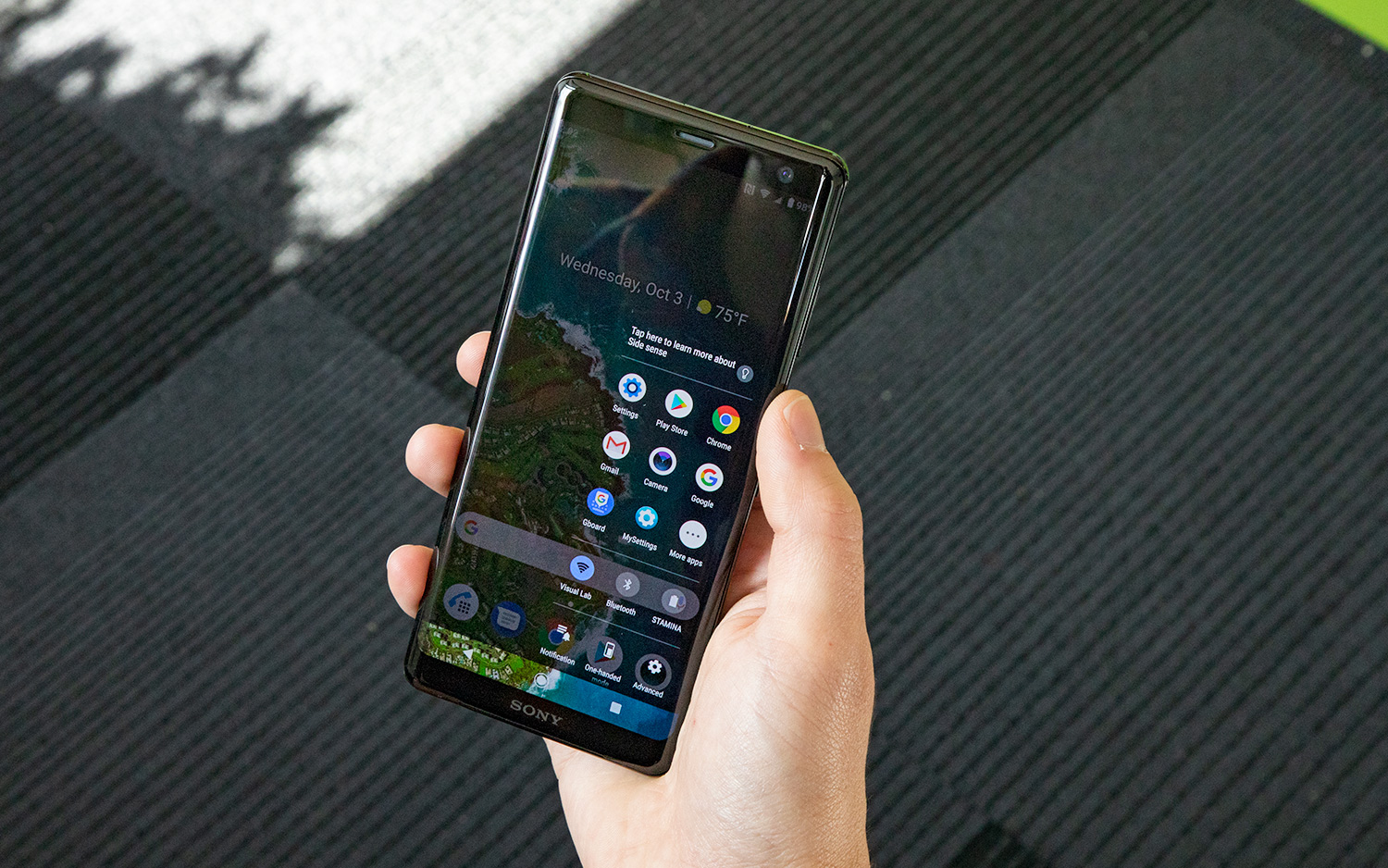
The new approach was a welcome one, but the XZ2 was still far from perfect. It was thick, tall and bulky, with a fingerprint sensor that sat awkwardly low on the back of the device and a super-slippery finish that made it prone to sliding off surfaces. These concerns remain with the Xperia XZ3.
At 6.8 ounces, the XZ3 isn't quite as heavy as the 7.1-ounce iPhone 8 Plus, but it's close. Actually, the XZ3 is ever so slightly taller and thicker than the handset it's replacing, yet the bezels haven't been trimmed any further.
Sony's hallmarks, like stereo front-facing speakers and a dedicated two-step camera button, return on the XZ3. But in other respects, this device looks rather generic — especially if you opt for the uninspired black model. The Forest Green and non-U.S. Bordeaux Red model are much more distinctive.
Yet the XZ3's poor ergonomics far outweigh any aesthetic concerns. Even once you get past the odd placement of the fingerprint sensor, you still have to contend with Side Sense — a new feature Sony has introduced to the XZ3 that should make life easier, but instead very quickly becomes a nuisance.
The funny thing about Side Sense is that it's tremendously easy to trigger, but never when you want to.
Side Sense is sort of similar to Google's Active Edge tech in the Pixel 2, except rather than squeezing the phone for shortcuts, you double-tap the edge instead. The problem with this in relation to the fingerprint sensor is that it's much harder to double-tap the side of the device with your thumb when your index finger is where it has to be to unlock the phone. It forced me to adopt an awkward grip — let's call it Xperia Claw — whereupon I primarily balanced the phone with my middle and ring fingers, while my pinky provided support from the bottom edge just to stabilize the whole mess.
The funny thing about Side Sense is that it's tremendously easy to trigger, but never when you want to. Unlike the Pixel 2, it's not the frame that's sensitive to pressure — it's the bit of glass right above it. But even when you're aware of this, directly pressing the that space doesn't always call up shortcuts.
MORE: Best Phablet: Top Big Screen Phones (6 Inches or Larger)
Ironically, though, I accidentally summoned Side Sense all the time when I was just holding the phone in my hand normally. In that way, the XZ3 seems to operate with the polar opposite of palm rejection. Maybe it'd be avoidable if you could restrict Side Sense to certain portions of the edge — like, say, the region between the volume and power buttons. However, Sony offers very few customization options. You can set Side Sense to operate on one or both sides, but you can only increase the sensitivity — not lower it.
It's these issues that make Side Sense feel like a bad joke at your expense. It pops up most often when you least want it to, requires you to hold the device in an odd fashion, and there's absolutely nothing you can do to fix the feature — short of turning it off, of course.
Display: OLED at last
After years of trotting out LCD phones while its competitors moved onto newer and better display technology, Sony has finally released a flagship Xperia handset with an OLED screen.
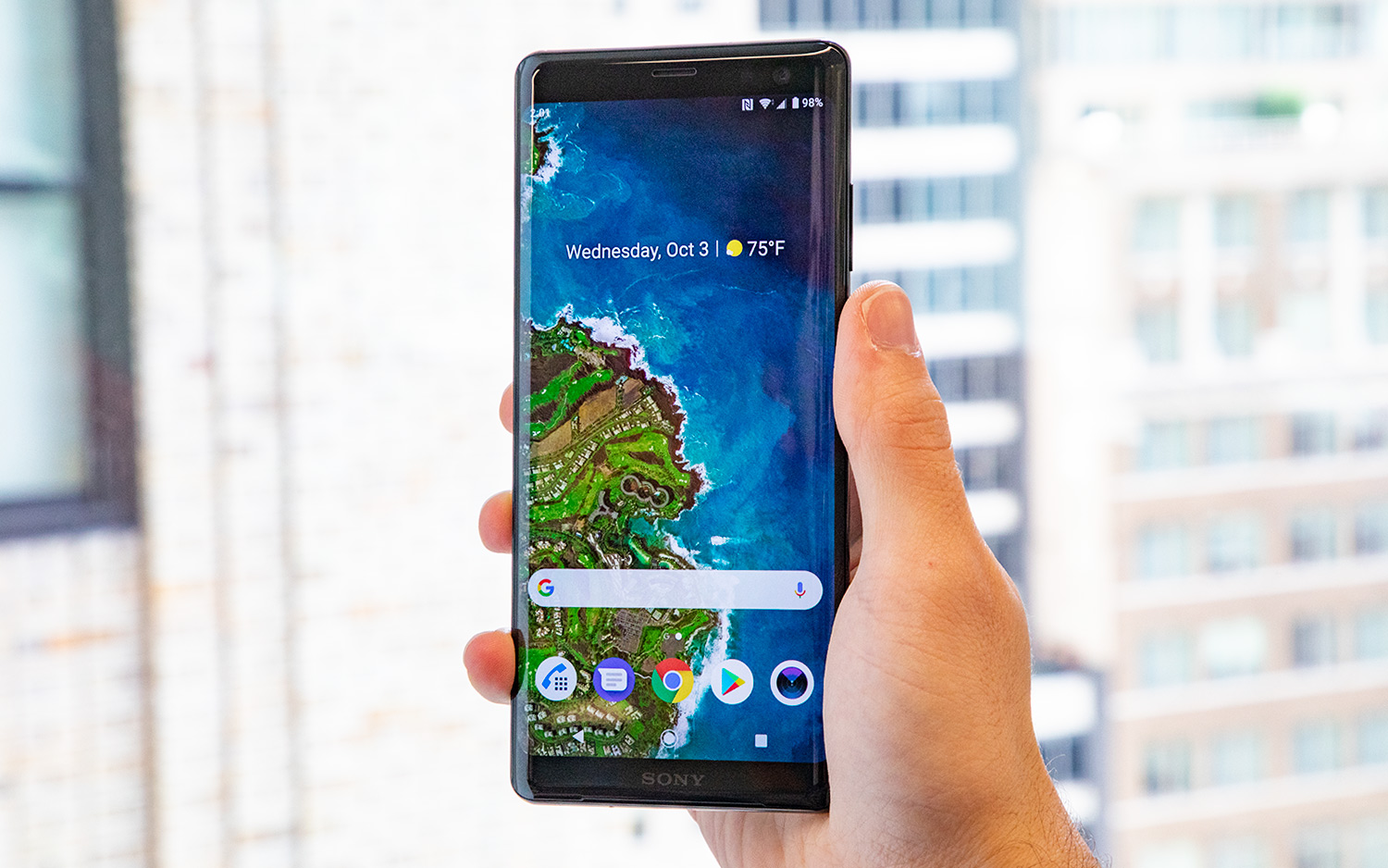
The XZ3 sports a 6-inch curved OLED panel with a resolution of 2880 x 1440. Although it doesn't pack quite as many pixels as the XZ2 Premium’s 4K LCD display, the XZ3's screen does get brighter, peaking at 520 nits under our light meter, compared with the 442 that the XZ2 Premium offered. The iPhone XS Max's 611-nit Super Retina Display still outpaces both, though the XZ3 is at least above the 466-nit smartphone average.
That’s all well and good, but the real reason you want the XZ3’s display is for the vividity of its colors. Watching the trailer for Spider-Man: Into the Spider-Verse on Sony's handset, I was struck by the intensity of the candy-colored digital billboards lining Times Square as the famous web-slinger swept past. The XZ3 painted the neon hues with a bit less warmth than Samsung's Galaxy Note 9, though the XZ3 delivered a crisper image overall.
The XZ3's display concedes some extra visual noise in the pursuit of increased clarity, but the end result still looks great.
Peering closely into the XZ3's screen, you can see a slight paper-texture effect that marks certain OLED panels, like those in the LG V40 and Pixel 2 XL. The Galaxy Note 9 and iPhone XS smooth over these artifacts, but do so in a way that makes on-screen content look a bit softer than what you'd see on Sony's flagship. In other words, the XZ3 concedes some extra noise in the pursuit of increased clarity, though the end result still looks great.
MORE: QLED vs OLED TV: Who Wins?
Regarding color accuracy, Sony's smartphone struggles a bit compared with the competition. The XZ3's 0.53 Delta-E score in the phone's Standard Mode is moderately high compared with the iPhone XS' 0.26 rating, indicating less realistic hues. (Numbers closer to zero are better.) However, the XZ3 display's ability to cover 219.7 percent of the sRGB color space is about on a par with the Note 9's 224 percent. Xperia owners who prefer either more muted or saturated colors canswitch between alternate profiles to customize their viewing experience.
Camera: Not good enough for the price
There's just one camera on the back of the Xperia XZ3: a 19-megapixel, f/2.0 lens armed with Sony's Exmor RS sensor and Bionz image-processing tech. On the front, you'll find a 13-MP lens with an every-so-slightly larger f/1.9 aperture.
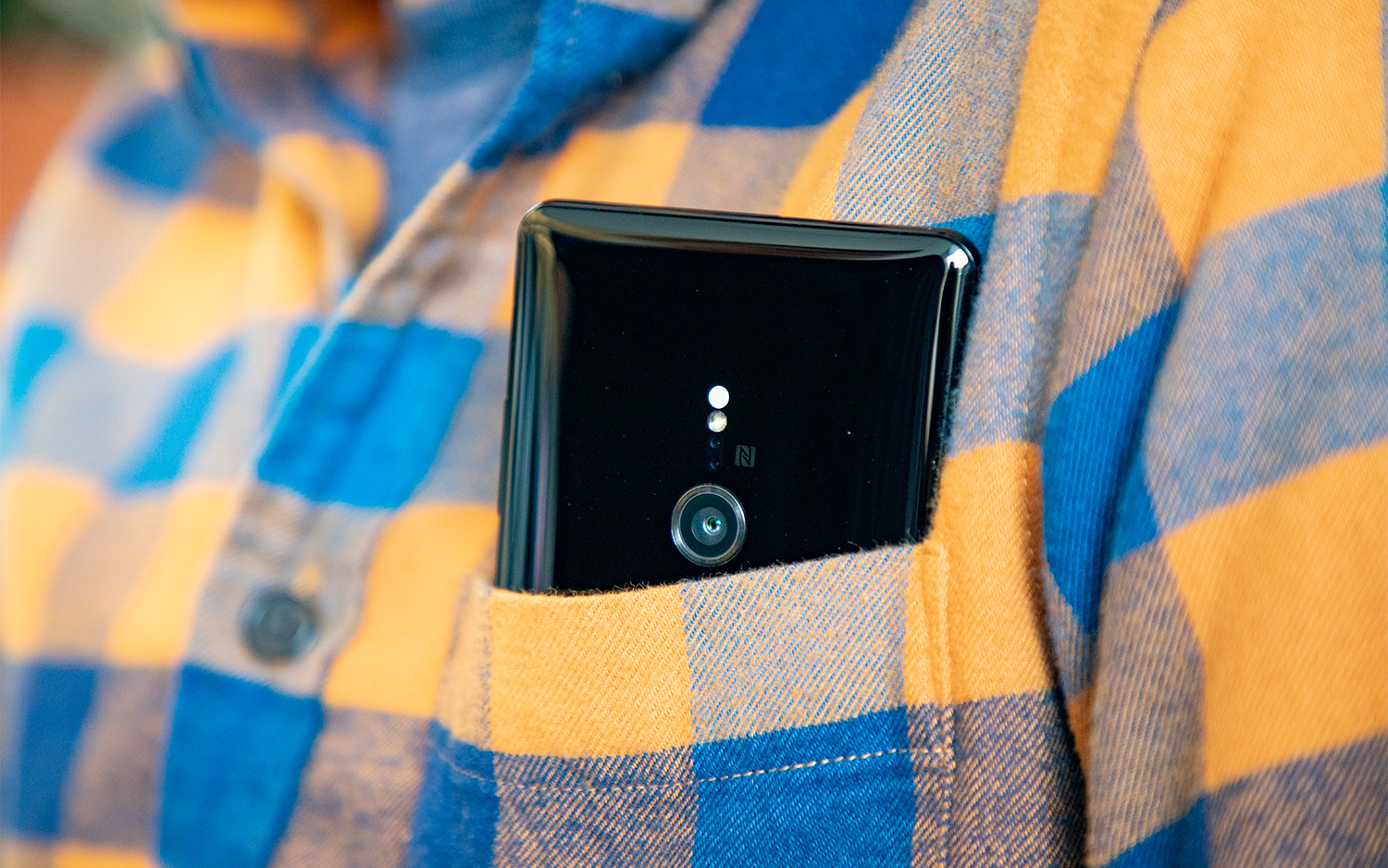
These days, it's a bit strange returning to a single-lens main camera in a flagship smartphone. That's not necessarily an indictment of the XZ3's shooter — the Pixel 2 also employs one sensor and remains our favorite camera phone to date. However, Sony hasn't been able to give the XZ3's rear camera a Portrait mode, which some aspiring mobile photogs may find disappointing.
As a result, the above portrait of my colleague Caitlin just didn't pop with the same kind of drama you'll see in the Note 9's rendition, which also benefited from the zoomed-in perspective from that device's telephoto lens. With the XZ3, I had to get the phone really close to Caitlin's face to achieve a similar shot, and even then the final product had an unflattering fisheye effect to it.
The Sony and Samsung devices adopted very different strategies in capturing the flower you see above. The Note 9 picked up all the little glimmers of light within the petals that the XZ3 missed, while the XZ3 brightened up everything and boosted the yellows and reds for a much more striking initial impression. I prefer the Xperia's attempt for its liveliness, but this is one of those examples where each phone excels in different areas.
The Note 9 offers one of the best low-light cameras you'll find in any smartphone, and it demonstrates why here. Sure, the XZ3's attempt is better exposed in certain areas, but the Note 9 delivers so much more clarity across the board that’s it's really no competition. The Xperia's shot is tinged with noise and a smeariness that makes everything look out of focus.
Although the XZ3 can't pull off shallow depth-of-field portraits with its rear camera, it can do bokeh through the front lens. Unfortunately, after seeing the results, I'm not sure Sony should have bothered. The Xperia is unable to differentiate between the foreground and the background, resulting in artifacts around my shoulders, hat and hair where a portion of my surroundings remain sharp when they should be blurred. The details within my face are mostly fine, though my skin tone is a tinge too red.
Overall, the XZ3's images overall tend to be hit-or-miss, but I do have to give Sony props for simplifying its camera app. What used to be a complicated barrage of sliders and not terribly descriptive icons has been replaced with more intuitive organization. The new design more closely resembles the interface other phone makers have adopted. I also appreciated the new Smart Launch feature, which automatically launches the camera when you lift up the phone in landscape mode.
Performance: Respectable but not class-leading
The Xperia XZ3 is powered by the same Snapdragon 845 chipset found in the XZ2. And because the XZ3 features an identical 4GB of RAM as well, the user experience is pretty much the same between Sony's newest handset and its predecessor.
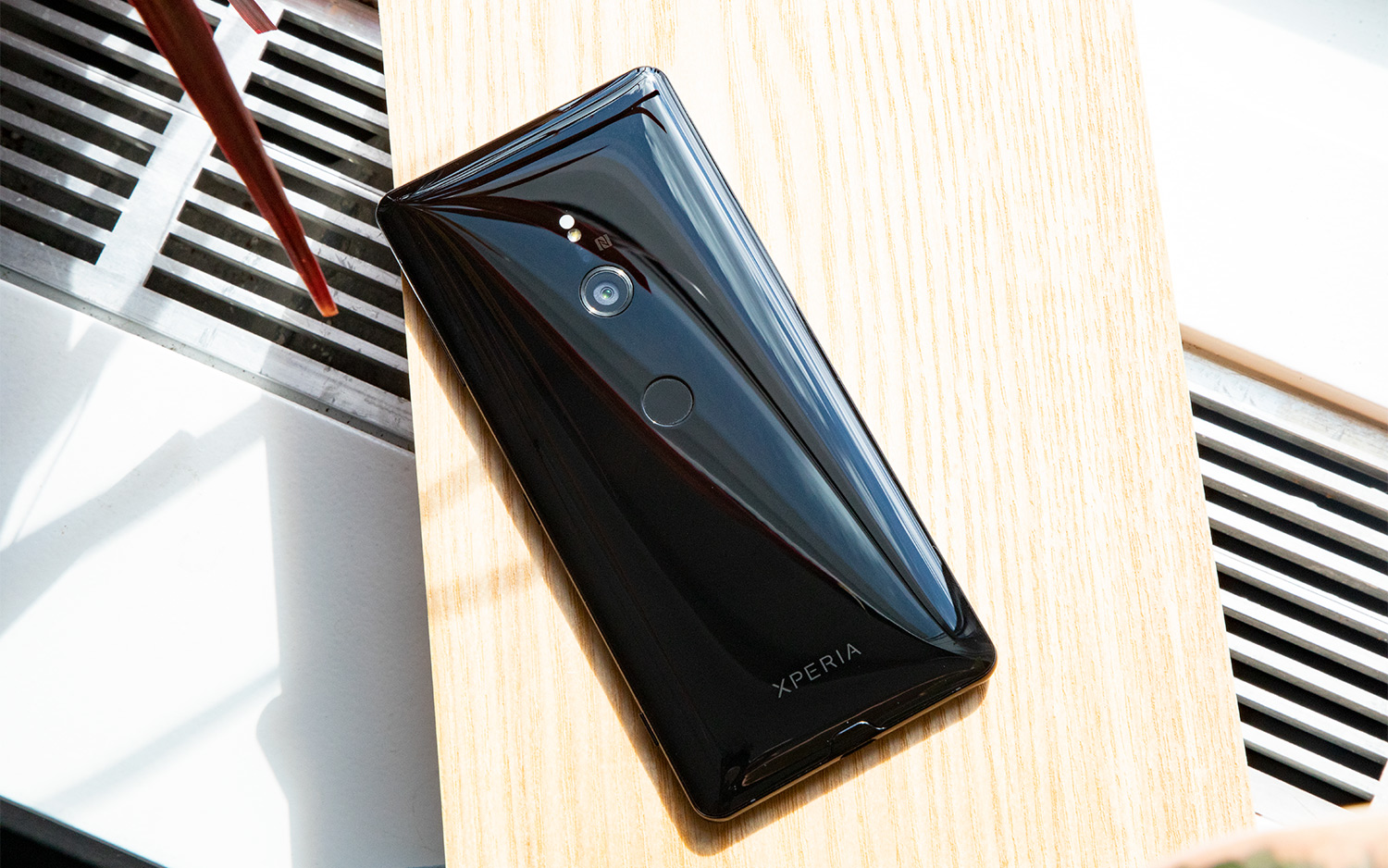
The XZ3 tallied a multicore score of 8,253 in Geekbench 4, a benchmark that measures overall performance. That's slightly below the XZ2's 8,449, though the difference is so minimal that it doesn't translate to a noticeable drop in performance.
Still, other premium Android offerings, like the OnePlus 6, the Galaxy Note 9 and even Asus' $499 ZenFone 5Z, hover around the 9,000 threshold, thanks to their extra RAM — which help out when you switch between apps or run multiple tasks at the same time.
Nevertheless, the XZ3 handled PUBG Mobile at its high frame rate and HDR graphics settings. While there were a few errant lost frames here and there, the experience was still consistent enough for me to pick off four enemies and gather a ton of loot. Surprisingly, though, the XZ3 managed just 3,304 in 3DMark’s Sling Shot Extreme graphics test — some 1,000 points less than the LG G7 and 1,300 points behind the Galaxy S9+.
MORE: 5 Ways the Note 9 Beats the iPhone Xs Max
Industry benchmarks aside, the XZ3 performed adequately in our real-world video encoding test, where we convert a 2-minute, 4K video file into 1080p through the Adobe Premiere Clip app. The XZ3 accomplished this in 3 minutes and 35 seconds — 12 seconds faster than the OnePlus 6, but 40 seconds slower than the Pixel 2 XL, which still uses the last-gen Snapdragon 835 chip.
Battery: Average longevity
Sony has increased the size of the Xperia XZ3's battery to 3,330 mAh, up from 3,180 mAh in the XZ2. Because the phone runs much of the same hardware, we expected a similar showing in our battery test, where the XZ2 lasted for an impressive 11 hours and 47 minutes.
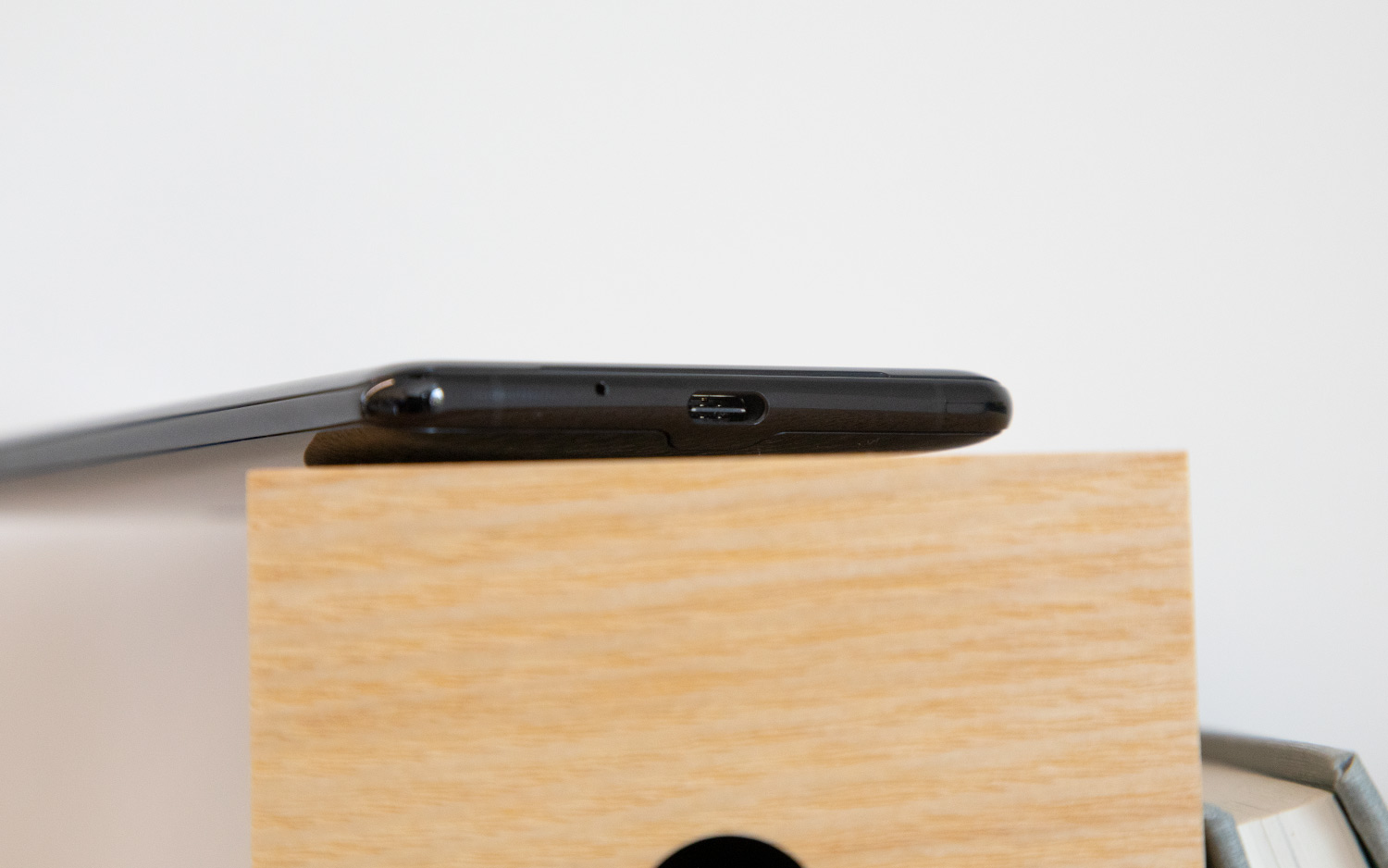
Unfortunately, the XZ3 gave up the ghost after just 7 hours and 41 minutes of streaming websites over T-Mobile LTE. That’s hardly an impressive number compared to the 9:48 average among smartphones, so we ran it again. The second time around, Sony’s flagship managed 8 hours and 4 minutes — a bit better, but still far from ideal.
Thankfully, out in the real world, the XZ3 fared much better, lasting about a day-and-a-half with moderate usage. On one particular day, I unplugged the device at 7:40 PM and didn’t plug it back in again until it dropped to about 20 percent at midnight the next evening. Two full days or more would seem to be a stretch, but thankfully the poor result from the web streaming test proved an aberration in this instance.
Once again, the latest Xperia boasts Sony's Battery Care technology, designed to limit the amount of time the phone is kept fully charged to reduce stress on the battery, extending its overall life. The XZ3 accomplishes this by monitoring your daily charging habits, then predicting when you'll remove the phone from the charger. The device also supports Qi induction for wireless charging.
MORE: iPhone XS Drop Test: Watch It Survive an 11-Foot Drop On Concrete
Unfortunately, if you use the adapter and the USB Type-C cable that comes with your XZ3, you'll find the device won't top up very quickly. The XZ3 made it to only 28 percent capacity over 30 minutes when connected to the stock gear. Charging the device with a third-party 65-watt charger didn't speed things up, either. It's disappointing to see such slow charging speeds in such an expensive phone, given that many handsets, including the $529 OnePlus 6, can hit 60 percent in the same amount of time the XZ3 takes to reach half that.
Software: Gimmicks in your Pie
Credit to Sony for launching the Xperia XZ3 with Android 9 Pie — the latest version of Google's mobile OS. The update won't arrive for the XZ2 series until November, but XZ3 owners get it right out of the box.
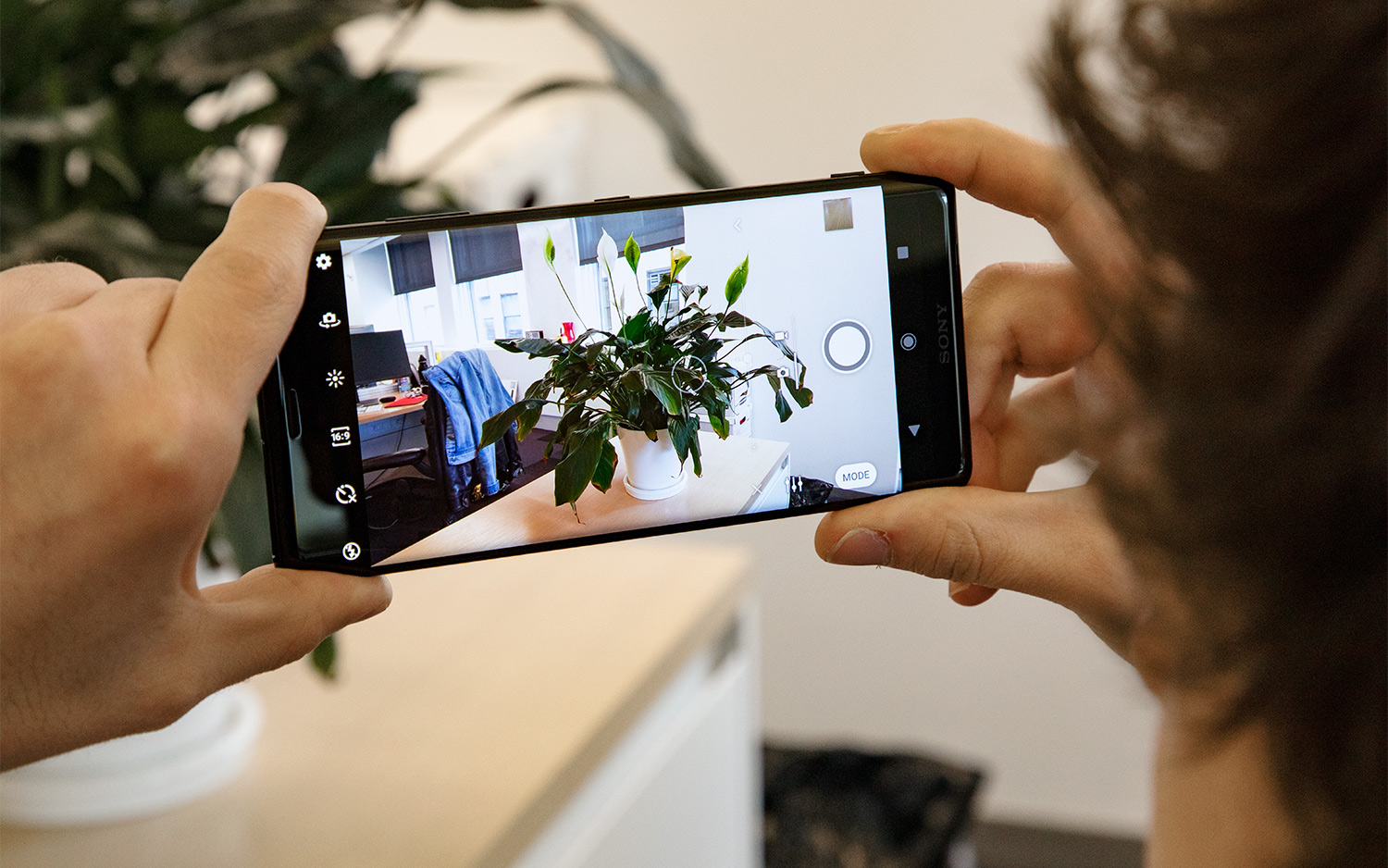
With Pie comes a few interface changes to messaging notifications, refinements to Autofill and accelerated machine learning. However, Google's suite of Digital Wellbeing features aren't included in at least this initial release, nor is the OS' new gesture-based navigation system. For now, some of these remain Pixel-only features, and those who do pick up an XZ3 might feel left in the lurch even though their phone technically runs Android 9.
Aside from those omissions, Sony's interpretation of Android remains one of the cleaner and lighter installations you'll find. The company now allows you to choose which of its custom apps and partner services you'd like to install on your phone when you set it up, which is a nice way to avoid some unwanted bloatware, like Sony's Movie Creator app. However, Xperia devices still rely on Swiftkey as their default keyboard app, which wouldn't be a big deal if it was scaled properly on the XZ3's big display. The keys end up being far too small to reliably hit, which made Gboard one of the first apps I installed on our review unit.
Finally, no discussion of a flagship Xperia would be complete without recognizing the eternally confounding Dynamic Vibration feature. Dynamic Vibration partners an oversize haptic motor with proprietary software that vibrates the phone to match the intensity of the sound playing.
Consider all the handsets you could buy that cost about as much as the Xperia XZ3.
As far as I can tell, Dynamic Vibration hasn't seen any improvement on the XZ3. While the motor is powerful, it's remarkably imprecise; don't expect any of that nuanced, highly specialized tactile feedback that makes devices like the iPhone XS, the Pixel 2 and the Galaxy S9 so satisfying to use. It's still hilariously poorly suited for music, and a really bad idea to accidentally leave on when the phone is sitting flat on a surface — lest you want your $900 smartphone to march itself off a desk and into a million little pieces, lemmings-style.
MORE: LG V40 ThinQ vs. Galaxy Note 9: It's Not Even Close
Dynamic Vibration still isn't compatible with many games, including PUBG Mobile. Worse yet, when it does work, the pulses never feel synced to the content on screen. The latest Venom trailer simply sent a low hum through the phone's body from start to finish. The motor was so hyperactive that it didn't feel like it was accentuating key moments — rather, it made me feel like a fool for cradling a phone that wouldn't stop buzzing for 3 minutes straight.
Bottom Line
In the grand scheme of things, the Sony Xperia XZ3 is a serviceable premium smartphone with a gorgeous OLED display, top-tier hardware and build quality and the latest version of Android onboard. But serviceable isn't good enough when you're spending just shy of a grand.
Consider all the handsets you could buy that cost around the same price of the XZ3. There's the iPhone XS at $999, which offers a much better camera, brighter screen and faster performance. Those who prefer Android could spring for the $849 Galaxy S9+, which offers both of those aforementioned benefits as well as a better design, greater battery life and even a headphone jack. The Note 9 unleashes a barrage of special productivity features with its S Pen, while the OnePlus 6 outperforms the XZ3 with up to twice the RAM, yet costs nearly $400 less.
There are simply too many good options out there to settle for the XZ3, and even more on the way. The Pixel 3 will be here soon, and OnePlus will have a follow-up to the OnePlus 6 as well. You could make an argument for the previous Xperia XZ2 at $799, but all Sony has really done with the XZ3 is thrown in a nicer display and jacked up the price. For consumers, the math just doesn't add up.
Credit: Tom's Guide
Adam Ismail is a staff writer at Jalopnik and previously worked on Tom's Guide covering smartphones, car tech and gaming. His love for all things mobile began with the original Motorola Droid; since then he’s owned a variety of Android and iOS-powered handsets, refusing to stay loyal to one platform. His work has also appeared on Digital Trends and GTPlanet. When he’s not fiddling with the latest devices, he’s at an indie pop show, recording a podcast or playing Sega Dreamcast.
